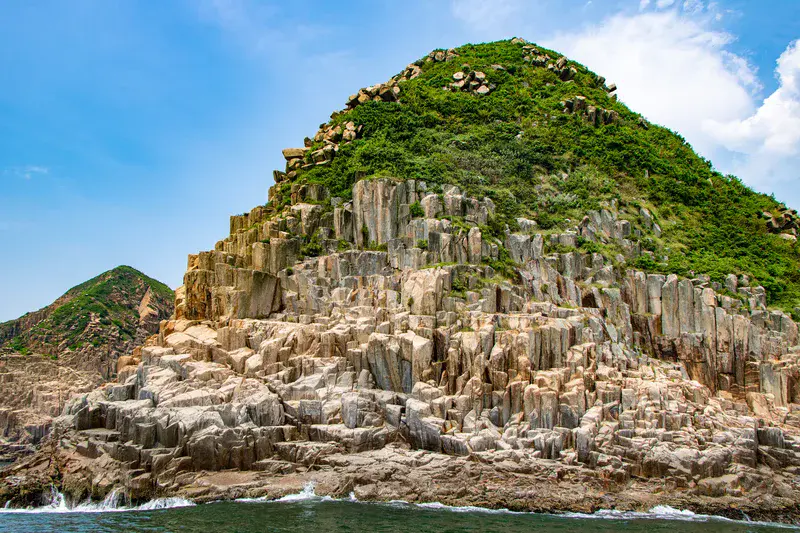
Ninepin Group: the spectacular hexagonal columns
by Angel Ling, ETH Zürich, Zurich, Switzerland
The picture shows the world’s rarest hexagonal rhyolitic volcanic rock columns on the northern island of the Ninepin Group in the easternmost waters of Hong Kong. These rocks columns are believed to form about 140 million years ago after a major volcanic eruption near Sai Kung. When the volcanic ash and lava slowly cooled down, joints and cracks started to develop on the surface and then extended downwards. The contraction of cooling resulted in hexagonal rock columns. The large rock columns suggest that they were formed in a very stable environment, where the cooling process was relatively slow. Weathering and erosion have great impacts on forming the current landscape of the Ninepin Group. There were inclined joints or cracks in the rocks. After a long period of weathering, the rocks above the joints were eventually shed down and gradually became the rugged but spectacular landscape we see today.
Categories
- Field (2899)
- Geochemistry, Mineralogy, Petrology & Volcanology (990)
- Geomorphology (1407)
- Stratigraphy, Sedimentology and Palaeontology (531)
- Tectonics and Structural Geology (585)
Location
- Asia (1131)
- Eastern Asia (258)
- China, Hong Kong Special Administrative Region (7)
- Exact location (114.3527 E, 22.2618 N)
Tags
Colours
Image properties
6000 × 4000 px;
image/jpeg; 23.5 MB
Camera:
Canon EOS 760D
Software: lightroom
Taken on 9
August
2016
Submitted on 31 January 2020
Licence
Creative Commons Attribution-NonCommercial-ShareAlike 3.0 Unported (CC BY-NC-SA 3.0)
Credit
Angel Ling (distributed via imaggeo.egu.eu)
Share
Appreciate
Report